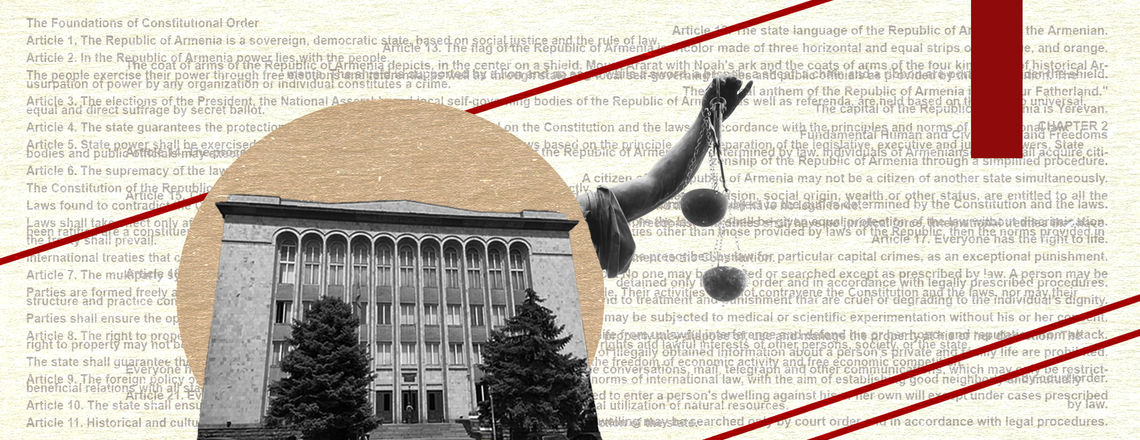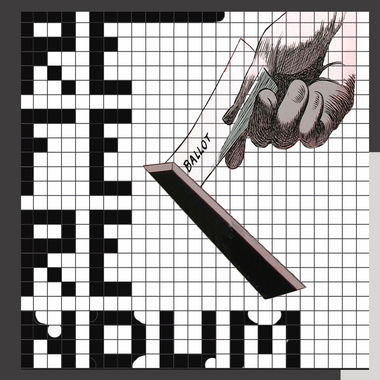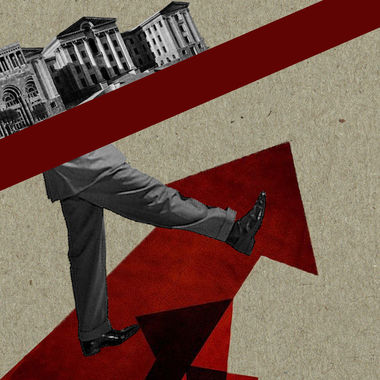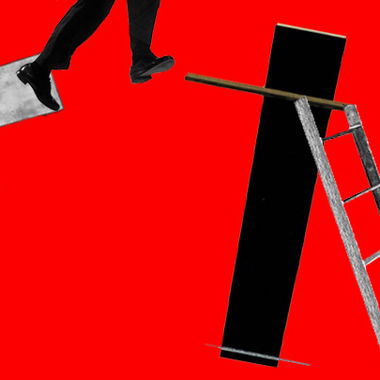
According to a leaked diplomatic cable, on March 6, 2008, Valeri Poghosyan, a member of Armenia’s Constitutional Court, secretly approached the U.S. Embassy for an urgent meeting. Five days earlier, security forces had cracked down on protesters during post-election demonstrations in Yerevan, leaving ten people dead. “Poghossian alleged to [embassy officials] that President Kocharian has fixed the court’s upcoming March 8 decision to decide against the complaint by ex-president Levon Ter-Petrossian alleging vote fraud in the disputed February 19 presidential election,” reads the letter by Joseph Pennington, Deputy Chief of Mission at the U.S. Embassy in Yerevan. Poghosyan went on to decry a state of “absolute tyranny” where pressure and fear was used to intimidate any opposition, making it “impossible to solve issues by legal means.” When the Constitutional Court eventually upheld the election results, Justice Poghosyan did not participate in the decision at all. He stayed home, sick with the flu.
Justice Poghosyan stayed on the Constitutional Court until 2014, three years after the leaked cable was revealed.
On April 5, 2020, Armenian voters will have their say in a referendum on whether to dismiss seven of the nine justices currently serving on the Court. To make an informed decision, it is important to understand how Armenia’s Constitutional Court works.
The Role of the Constitutional Court
The Constitutional Court (CC) is a separate court in Armenia’s judicial system, with the power to exercise constitutional review and provide the final interpretation of the Constitution. The primary task of the CC is to ensure that the executive and legislative powers of the government do not overstep their Constitutional bounds. Thus, the CC reviews laws, executive orders, regulations and international treaties to determine whether they are in compliance with the Constitution. Before constitutional amendments are approved, the CC also checks if the proposed changes are in compliance with the framework of the Constitution. Even though the Constitutional Court is not organizationally superior to any of the courts in the country, it is considered to be the highest court because of the importance of its mandate.
The Constitutional Court also hears disputes over election results. If a political party disagrees with the Central Electoral Commission’s decision regarding the election results, they can challenge the decision at the CC (without exhausting the three judicial remedies: the First Instance General Jurisdiction Court, Appellate Court and the Court of Cassation). The reason electoral disputes are handled by the Constitutional Court is because it is considered to be a political court that has the power to interpret the most political document in the country. While considering electoral disputes, the CC also has the power to look into the Electoral Code to see if there are norms that restrict the free expression of people’s will. It takes a more comprehensive approach and considers the issue from the standpoint of the country's democratic commitments, policies implemented by the state and guaranteeing human rights. Another reason is that the Constitutional Court is considered to be the most protected court in the country, and the justices are supposed to have the required authority, reputation and powers to deal with sensitive issues such as electoral disputes.
The Constitutional Court is one of the two models of highest courts, exercising exclusive jurisdiction over constitutional matters. It is known as the centralized Kelsenian system of judicial review, named after Austrian legal scholar Hans Kelsen who developed it. This model is predominant throughout continental Europe, including France, Germany and Austria. The other model is known as the decentralized system of judicial review, where countries do not have separate constitutional courts. Instead, all courts may rule on constitutional matters, but the highest instance of the judicial system, usually the Supreme Court, has jurisdiction over every area of the law, including constitutional matters. This model is used in the United States and Canada.
Constitutional Referendums
Armenia’s Constitution, which established the Constitutional Court, was adopted on July 5, 1995 through a nationwide referendum. Back then, the Expert Commission that drafted Armenia’s Constitution consisted of 20 members, among them lawyers, philosophers, economists, politicians, academics and scientists.
During the 25 years of its existence, Armenia’s Constitution has been amended twice, through popular referendum, both times reshaping the Constitutional Court. The first time was in 2005. According to the 1995 Constitution, as well as the amended version, the Court consisted of nine members, four of which would be directly appointed by the President and five by the National Assembly. The term of office was one of the significant changes that were made to the Constitution in 2005. Members of the CC that were appointed before the 2005 referendum can hold office until the age of 70, while those appointed after it can hold office only until the age of 65.
The procedure for the appointment and term of office of CC judges was changed by the 2015 constitutional referendum. According to the new procedure, the CC would still consist of nine members, but now three would be nominated by the President, three by the Government (the executive branch, led by the Prime Minister), and the last three by the General Assembly of Judges. The Constitution specifies that the General Assembly of Judges may only nominate judges, while the President and the Government can nominate individuals with high professional and moral qualifications. Nominated candidates are elected (or, confirmed) by the National Assembly for a term of 12 years through a vote requiring at least three fifths of the total number of Members of Parliament to be in favor. Another change that was introduced by the 2015 Constitutional referendum was that “members” of the Constitutional Court were now referred to as “judges.”
Qualifications to Sit on the Constitutional Court
The Law on the Constitutional Court, which was adopted in 1995 and amended three times since then, lays out a set of qualifications that are required for those appointed to the CC. The qualifications put forward by the Law, as well as in the amended 1997 version, are quite vague. They include requirements such as higher education, at least 10 years of work experience, legal experience and a high moral character. The 2006 version of the Law lists more specific requirements, including higher legal education, an academic degree in Constitutional Law, and at least 10 years of legal work experience. The Law was last amended in 2018. Despite having requirements that are still open to interpretation, this latest version is much more comprehensive than the previous three. Some of the requirements are high professional and moral qualifications and at least fifteen years of professional experience as a lawyer. The Law on the Constitutional Court and all of the amended versions mention that a member of the CC may not be a member of any political party or engage in any political activity.
Who Sits on the CC Now?
The current nine members/judges of the Constitutional Court are Hrayr Tovmasyan, Alvina Gyulumyan, Hrant Nazaryan, Feliks Tokhyan, Ashot Khachatryan, Arevik Petrosyan, Araik Tunyan, Arman Dilanyan and Vahe Grigoryan. Two of the Court members were elected during the tenure of Armenia’s first President Levon Ter-Petrosyan, when the original 1995 Constitution was in force. They will hold office until the age of 70. Five of the judges were elected under the terms of the 2005 Constitution, which remained in force until April 9, 2018. They will hold office until the age of 65. Arman Dilanyan and Vahe Grigoryan are the the only two judges of the CC that were elected based on the procedure set by the 2015 Constitution and will hold office for 12 years only.
Alvina Gyulumyan, 64, is the only member of the Constitutional Court who was appointed twice, first in 1996 by the decree of then-President Levon Ter-Petrosyan and a second time in 2014. During her first tenure, Gyulumyan was also a member of the State Commission that drafted the 2005 Constitutional Amendments. In 2003, Gyulumyan left the post of Constitutional Court member to serve as Armenia’s judge at the European Court of Human Rights (ECHR). After her decade long tenure at the ECHR, by the decision of then President Serzh Sargsyan, Gyulumyan was reappointed as a member of Armenia’s Constitutional Court in 2014. In January 2020, she was appointed Deputy Chairman of the CC. Gyulumyan will turn 65 in 2021.
Hrant Nazaryan, 61, was appointed as Constitutional Court member in February 1996 by then-President Levon Ter-Petrosyan. He is one of the two judges that can hold office until the age of 70. Since 1991, Nazaryan worked as the chief consultant in the Legal Department of the Supreme Council (Armenia’s Parliament, before it was renamed to the National Assembly in 1995) and later as the Chief Specialist of the Legal Department in the President’s Office. He is the only member of the CC that took part in training programs at American universities, first at the International Law Institute in Washington, DC, and later at the Academy of American and International Law in Texas. Nazaryan will turn 70 in 2029.
Feliks Tokhyan, 64, is the second member of the Constitutional Court that can hold office until he is 70. He was appointed as a member of the CC in September 1997, again by the decree of Armenia’s first President Levon Ter-Petrosyan. Before his appointment to the Constitutional Court, in the early 1990s, Tokhyan primarily worked in academia, first as a fellow and researcher at the Institute of Philosophy and Law at the National Academy of Arts and Sciences, then as the Head of the Faculty of Law at Galick University, and finally as a law professor at the Public Administration Academy. Tokhyan will turn 70 in 2026.
Ashot Khachatryan, 58, was elected as a Constitutional Court member by the National Assembly in December 2010. Since he was appointed after the 2005 Constitutional referendum, Khachatryan can hold office until he turns 65. Before his appointment to the Constitutional Court, Khachatryan worked in Armenia’s Tax Service and from 2004 to 2010 headed the National Assembly’s Legal Department. He will turn 65 in 2027.
Arevik Petrosyan, 48, was also appointed in December 2010, by the decree of then-President Serzh Sargsyan. Similar to Khachatryan, she can hold office until she is 65. Since 1994, Petrosyan held a number of civil service positions at the President’s Office, served as the Deputy Minister of Justice from 1999 to 2002 and was awarded with the medal of the RA Council of Civil Service. Before her appointment, Petrosyan was elected a Member of Parliament in the 2007 election as a member of the Prosperous Armenia Party (PAP). During her three years in Parliament, Petrosyan served as the Chair of the Standing Committee on the Protection of Human Rights and Public Affairs, Deputy Speaker of Parliament, and a member of the Standing Committee on Healthcare, Maternity and Childhood. She will turn 65 in 2037.
Araik Tunyan, 54, was elected as a member of the Constitutional Court in June 2014 by the National Assembly. Tunyan’s prior work experience was mainly in the public sector, first at the Ministry of Justice as a Senior Specialist at the Department of Legislative Issues and later at the President’s Office as the Head of the Legal Department. He is a recipient of the Mkhitar Gosh medal, which is awarded for outstanding state and social-political activities, as well as for significant services in the spheres of diplomacy, law and political science. Tunyan will turn 65 in 2031.
Hrayr Tovmasyan, 49, is the second Chairman (also styled as “President”) in the history of Armenia’s Constitutional Court, since its establishment in 1995 (his predecessor, Gagik Harutyunyan served from 1996–2018). Tovmasyan was confirmed as a member of the Court on March 2, 2018. On March 21, the National Assembly elected him as the Chairman of the CC. The amended 2015 Constitution states that it is the CC that shall elect the Chairman and Deputy Chairman of the CC from among its members for one six-year term. Before joining the Constitutional Court, Tovmasyan served as Justice Minister from 2010 to 2013. He was also one of the nine members of the Expert Commission that developed the 2015 Constitutional Reforms. From April 2017 until his appointment to the Constitutional Court, Tovmasyan was a Member of Parliament and part of the Republican Party of Armenia (RPA) Caucus. He is also a recipient of the Mkhitar Gosh medal. Tovmasyan will turn 65 in 2035.
Arman Dilanyan, 46, was elected as a judge of the Constitutional Court in September 2018 by the National Assembly. He is one of the two judges, along with Vahe Grigoryan, who was elected after the 2015 Constitutional amendments came into force on April 9, 2018, which means he can hold the office for 12 years. From 1996 to 2013, Dilanyan held a number of positions at the Constitutional Court, including Assistant to the Vice-President of the Court, Head of the Analysis Division of Individual Applications, and Head of the Legal Advisory Service. In 2013, Dilanyan was appointed as a judge with the Administrative Court by the decree of then-President Serzh Sargsyan, a position he had to leave upon joining the CC. He will hold office until 2030.
Vahe Grigoryan was confirmed to the post of Constitutional Court judge on June 18, 2019 by the National Assembly. This was Grigoryan’s second nomination by President Armen Sarkissian. The first time was under the previous Parliament, when the RPA still had a ruling majority and refused to confirm him. Grigoryan is the only judge on the CC with extensive experience in private practice. From 2005 until his election to the post of the Constitutional Court judge, Grigoryan worked as a lawyer and represented clients both before domestic as well as international courts. Grigoryan argued cases before the Constitutional Court regarding electoral disputes and over 60 cases before the ECHR and the Council of Europe Committee of Ministers. He also worked as a Legal Consultant at the European Human Rights Advocacy Centre and as an International Expert and Trainer at the Council of Europe. Grigoryan will hold office until 2031.
Who Can Apply to the Constitutional Court?
Article 169 of the Constitution provides the list of individuals and bodies within different branches of government that can apply to have their case heard by the Constitutional Court, while Article 168 lists the types of cases that the CC can hear. They include the National Assembly, a faction of the National Assembly, the President, Government (executive branch), Human Rights Defender, Supreme Judicial Council, local self-government bodies, Prosecutor General, candidates for President of the Republic and political parties that participated in National Assembly elections. Individual citizens of Armenia may also apply to bring a case to the Constitutional Court, if they have exhausted all three judicial remedies, have a final act of a court and want to challenge the constitutionality of the legal norm that was applied to their case.
Members of Parliament can challenge the constitutionality of laws, decisions adopted by the National Assembly, decrees and executive orders of the President, decisions of the Government and the Prime Minister, as well as other legal acts, if at least one fifth of the total number of Deputies endorses the application.
Cases Handled by the Court
During the past 25 years, Armenia’s Constitutional Court has rendered 1505 decisions. In only very few cases (perhaps 3 or 4) did CC members write a dissenting opinion. When a case comes to the Constitutional Court, each judge writes down their decision based on individual opinions and judgements. The decisions are then collected by the secretary of the Court or the Justice presiding over that case, and the position that receives the majority of the votes becomes the Court’s decision. When citizens take their case to the Constitutional Court, their guarantee for a just decision is that nine individuals will consider their case, and even if there is an issue with the final decision, judges can address the issue in a dissenting opinion.
According to the Law on the Constitutional Court, when the Court publishes its decision, only the vote total is made public. Thus, if a written dissenting opinion is not published, the public would not know how each judge voted. As a result, the consequences deriving from those decisions are taken under collective responsibility, which can dilute individual accountability.
Starting with the 1996 presidential election, the results of every presidential election, except 1998, that took place in Armenia were challenged at the Constitutional Court.[1] In none of these cases did the Constitutional Court make a decision that was against the interests of the ruling elite of the time. Dissenting opinions were never published regarding the disputes challenging the results of presidential elections. OSCE/ODIHR Election Observation Missions often pointed out shortcomings in the conduct of these elections. In 2003, their final report alleged “Voting, counting and tabulation showed serious irregularities, including widespread ballot box stuffing.” It seems the CC disagreed.
***
On April 5, 2020, as Armenian citizens head to the polls to vote in the Constitutional Referendum, the only amendment being proposed is to Article 213, calling for the dismissal of the seven members of the CC appointed prior to the new 12-year term limit coming into force.
1- See: 2003 (19 February and 5 March), 2008 (DCC-736), 2013, 2003, 2012 (DCC-1028), 2017 (DCC-1364).
Also read
Referendum Called
By Harout Manougian
Armenia’s National Assembly voted to call a constitutional referendum yesterday, which, if passed, would dismiss seven of the nine judges currently sitting on the Constitutional Court.
The Armenian Government’s Plan to Change the Constitution
By Lusine Sargsyan , Harout Manougian
Since Armenia’s independence, every head of government has shaped the country’s Constitution; Prime Minister Nikol Pashinyan has made it clear that he will not be an exception.
Did You Know Armenia Allows Internet Voting? (But It’s Only For Some)
By Harout Manougian
Internet voting introduces major risks but it is used by a small group of people in Armenian elections.
Transitional Justice
Watch the short documentary
Primer: Transitional Justice
Transitional justice is a form of exceptional justice, since it is introduced for a specific period of time to deal with exceptional circumstances. This primer is based on Dr. Nerses Kopalyan’s White Paper, Transitional Justice Agenda for the Republic of Armenia and is a summary of the key points of transitional justice.
Armenia Gets Serious About Reforms: Making Sense Out of Vetting
By Nerses Kopalyan
As an instrument of transitional justice, vetting is designed to “cleanse” state institutions that are tainted by systemic corruption, nepotism, and incompetence. Vetting of personnel is the first step toward the broader goal of institutional reform, writes Dr. Nerses Kopalyan.
by the same author
From Protecting the Corrupt to Punishing the Corrupt (or It Seems)
By Lusine Sargsyan , Nerses Kopalyan
Can the popularity of the National Security Service be sustained after the dismissal of Artur Vanetsyan? It can, but only through one mechanism: rigid institutionalization and the complete alleviation of the personalization of politics in Armenia.
Fighting Fake News or Censoring Speech Online
By Lusine Sargsyan
Finding the proper tools to combat the spread of misinformation and fake news on social media networks has confounded many societies and governments. State-authorized action could threaten free speech.
Europe’s Migration Policies: Deportation of Armenians on the Rise
By Lusine Sargsyan
Following changes in migration policies of EU countries, an increasing number of illegal Armenian immigrants were deported from the Schengen area. Armenia’s government has introduced a draft program, which, if adopted, will be the first initiative aimed at providing state support to deported Armenians.












EVN Report welcomes comments that contribute to a healthy discussion and spur an informed debate. All comments will be moderated, thereby any post that includes hate speech, profanity or personal attacks will not be published.